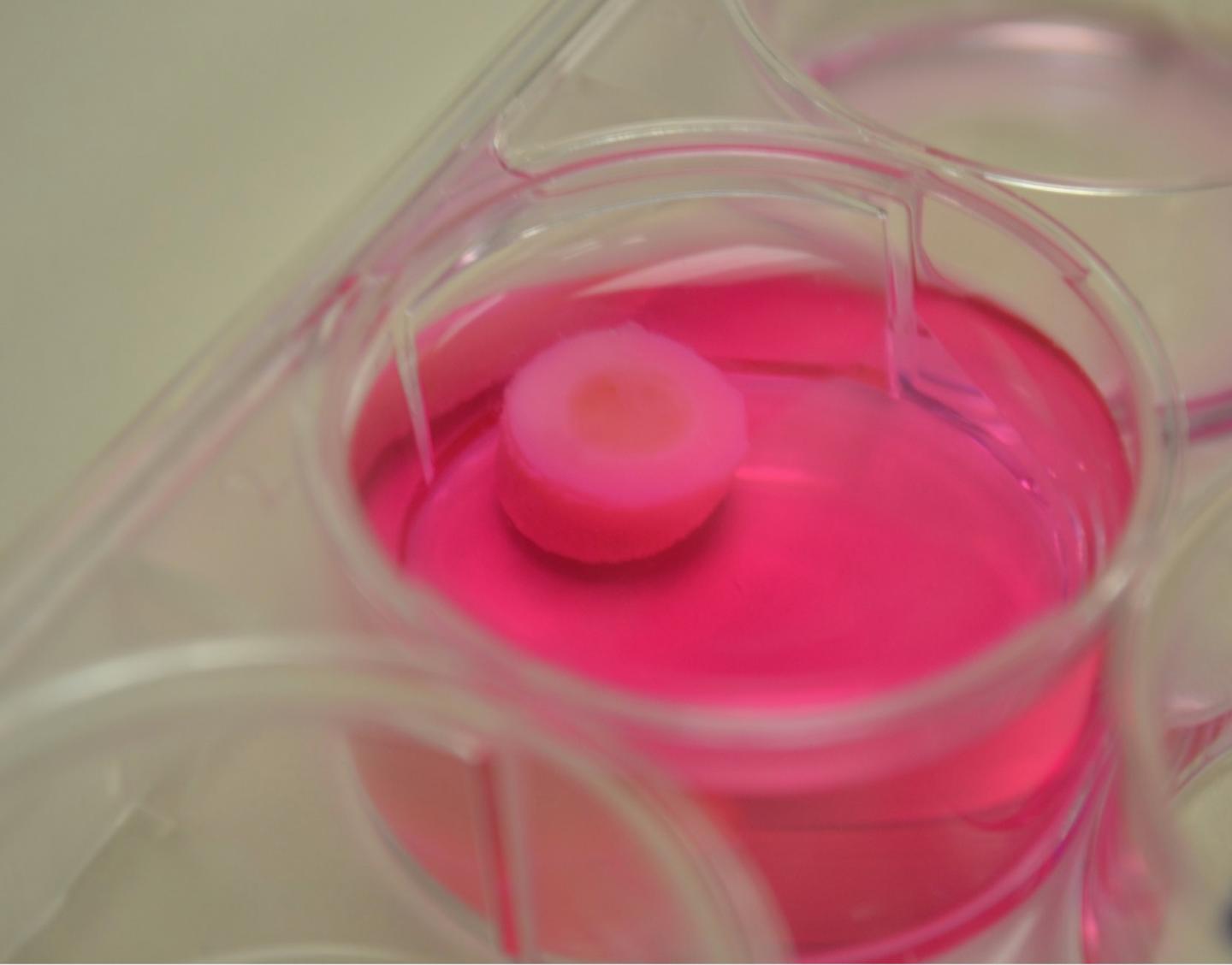
Strands of cow cartilage substitute for ink in a 3D bioprinting process that may one day create cartilage patches for worn out joints, according to a team of engineers. “Our goal is to create tissue that can be used to replace large amounts of worn out tissue or design patches,” said Ibrahim T. Ozbolat, associate professor of engineering science and mechanics. “Those who have osteoarthritis in their joints suffer a lot. We need a new alternative treatment for this.”
Cartilage is a good tissue to target for scale-up bioprinting because it is made up of only one cell type and has no blood vessels within the tissue. It is also a tissue that cannot repair itself. Once cartilage is damaged, it remains damaged.
Previous attempts at growing cartilage began with cells embedded in a hydrogel — a substance composed of polymer chains and about 90 percent water — that is used as a scaffold to grow the tissue.
“Hydrogels don’t allow cells to grow as normal,” said Ozbolat, who is also a member of the Penn State Huck Institutes of the Life Sciences. “The hydrogel confines the cells and doesn’t allow them to communicate as they do in native tissues.”
This leads to tissues that do not have sufficient mechanical integrity. Degradation of the hydrogel also can produce toxic compounds that are detrimental to cell growth.
Ozbolat and his research team developed a method to produce larger scale tissues without using a scaffold. They create a tiny — from 3 to 5 one hundredths of an inch in diameter — tube made of alginate, an algae extract. They inject cartilage cells into the tube and allow them to grow for about a week and adhere to each other. Because cells do not stick to alginate, they can remove the tube and are left with a strand of cartilage. The researchers reported their results in the current issue of Scientific Reports.
The cartilage strand substitutes for ink in the 3D printing process. Using a specially designed prototype nozzle that can hold and feed the cartilage strand, the 3D printer lays down rows of cartilage strands in any pattern the researchers choose. After about half an hour, the cartilage patch self-adheres enough to move to a petri dish. The researchers put the patch in nutrient media to allow it to further integrate into a single piece of tissue. Eventually the strands fully attach and fuse together.
“We can manufacture the strands in any length we want,” said Ozbolat. “Because there is no scaffolding, the process of printing the cartilage is scalable, so the patches can be made bigger as well. We can mimic real articular cartilage by printing strands vertically and then horizontally to mimic the natural architecture.”
The artificial cartilage produced by the team is very similar to native cow cartilage. However, the mechanical properties are inferior to those of natural cartilage, but better than the cartilage that is made using hydrogel scaffolding. Natural cartilage forms with pressure from the joints, and Ozbolat thinks that mechanical pressure on the artificial cartilage will improve the mechanical properties.
If this process is eventually applied to human cartilage, each individual treated would probably have to supply their own source material to avoid tissue rejection. The source could be existing cartilage or stem cells differentiated into cartilage cells.
###
Also working on this project were Yin Yu, recent Ph.D. from the University of Iowa now at Harvard University; Kazim K Moncal, graduate student in engineering science and mechanics and member of the Huck Institute, Penn State; Weijie Peng, visiting scholar in engineering science and mechanics, Penn State; Iris Rivero, associate professor of industrial manufacturing and systems engineering and Jianqiang Li, former student, Iowa State University; and James A. Martin, associate professor of orthopaedics and rehabilitation, the University of Iowa. The National Science Foundation, Grow Iowa Value Funds and the China Scholarship Fund supported this work.
Media Contact
A’ndrea Elyse Messer
[email protected]
814-865-9481
@penn_state
http://live.psu.edu
The post 3-D printing produces cartilage from strands of bioink appeared first on Scienmag.





